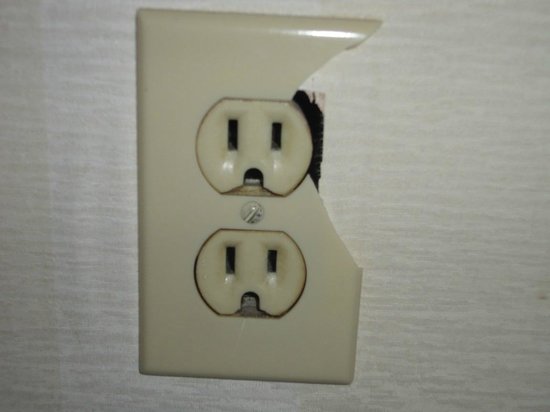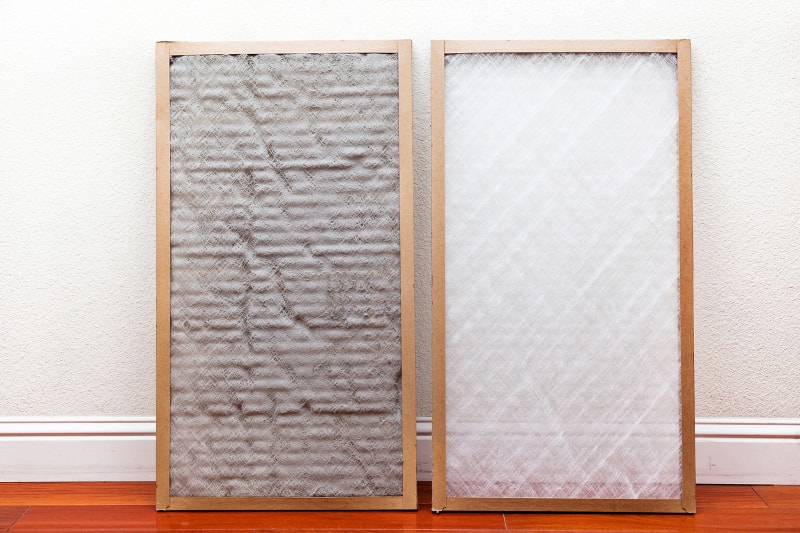Studies have revealed that most homeowners procrastinate or ignore home maintenance issues, mostly due to a lack of understanding of basic home maintenance or failure to adequately budget for such purposes.
A home that hasn’t been properly maintained can potentially lose as much as 10% of its appraised value. So, as with many situations, home maintenance can be seen as a “pay me now or pay me later” issue.
The following Home Maintenance Priorities focus on 5 of the most common big-ticket issues that provide the most significant opportunity to avoid major expenditures later, by committing to some preventative maintenance now.
Maintenance to Prevent Water Damage
We depend on water for virtually all aspects of life. However, too much water in the wrong place can lead to the deterioration of your home and its structural integrity due to rot, mold, and pests.
1. Clear out the gutters (Frequency: at least 2 times per year)
Properly functioning gutters and downspouts is critical to sufficiently diverting water from your roof to away from your home. Failure to keep them clean can reduce flow and cause a backup of water, resulting in overflow near the home’s foundation. Generally, you should plan to have them checked and cleaned in the early spring and late fall.
2. Inspect the caulking of bathroom fixtures (Frequency: once per year)
Caulk is vital to maintaining the water tightness of toilets, sink vanities, bathtubs, and shower enclosures. Failure of the seal provided by caulk can cause damage to hidden areas in the floors, walls, and related structural components that, over time, can become substantial.
Proactive, annual evaluation of the condition of caulking can help identify damage or deterioration warranting repairs or replacement before it becomes a bigger problem.
3. Plumbing of major appliances (Frequency: at least once a year)
Scheduling an annual deep clean and inspection of your major appliances can provide an opportunity to identify leaks or other moisture-related problems. Sliding your refrigerator and washing machine out to clean underneath and any coils/air vents will reveal leaks otherwise unseen while improving the operating efficiency and life expectancy of the appliance.
Clearing everything out from under your kitchen sink can give you a better view of the dishwasher and garbage disposal plumbing and drainage and any evidence of drips or leaks.
4. Sump pump testing (Frequency: at least annually in early spring)

If your home has a sump pump installed, you’re counting on it working when you need it to remove excess water in the event of heavy rainfall or storms. Testing the system, including the battery backup, pump and drain line, will help to ensure that it’s ready when needed.
Maintenance of a Home’s Structural Integrity
Damage to your home’s foundation or structural components can be easily overlooked unless you’re specifically looking for it. While larger issues may require evaluation by a qualified professional, a homeowner can, and should, inspect for signs of potential issues.
1. Look for signs of wood-destroying organisms (WDO) (Frequency: annually)
Some of the most common signs that WDO, including termites, ants, or beetles, are present include:
- Presence of “mud tubes” on the foundation or structural components
- Whitish-yellowing tinge on wood
- Wood that feels spongy or “gives” with pressure
- Presence of soil in wood cracks and crevices
- Any areas of rot

If you suspect the presence of WDOs, you should contact a professional immediately.
There are several things you can do as a homeowner to reduce the risk of WDOs, including:
- Keep the crawlspace and basement areas dry and well ventilated
- Make sure gutters and downspouts direct water away from the home’s foundation
- Store firewood at least 20 feet away from your house and 5” off the ground
- Make sure you maintain at least 8-10 inches between the top of your foundation and any grass, mulch, or other ground cover
2. Foundation issues (Frequency: every 6 months)
To avoid the development of significant issues, a homeowner should proactively look for, and make note of whether there’s an increasing incidence over time of sticking or jammed doors or windows, cracks in drywall, cracks in the basement floor or walls, or cracks in the exterior foundation.
If you’re seeing any of these, you should contact a qualified professional to further evaluate and recommend corrective options.
3. Refresh exterior paint and sealant (Frequency: Once a year)
Over time, exposure to natural elements will cause deterioration of exterior paint and sealant. What starts out as small cracks or chips can quickly develop into significant access points for water and moisture intrusion that can snowball into damaged siding, trim, and structural components of your home. Addressing minor issues once a year can add to the longevity of your home’s appearance, weather-proofing and structural soundness.
4. Inspect your roof (Frequency: twice a year—once in the fall, and once in the spring)
Maintaining a sound roof system is a crucial aspect of protecting your home from the impact of water and moisture intrusion that can develop into significant structural problems. If you’re not comfortable doing this yourself, you should hire a roofing contractor to inspect for missing or broken shingles, deteriorated flashing or sealant, algae build-up, and the condition of any chimneys or skylights.
Electrical System Maintenance
From routinely checking outlets to simply replacing light bulbs, a few simple electrical maintenance steps can provide payback and peace of mind. If you suspect that there’s an issue with your home’s electrical system (such as a bill that’s higher than usual, plugs that don’t work, or lights that won’t turn on regardless of lightbulb change), hire an electrician who can properly inspect, identify, and repair any electrical issues
1. Replace old lights with energy-efficient bulbs (Frequency: annually)
Old-style incandescent bulbs need frequent replacement and give off tons of heat compared to newer, energy-efficient LED bulbs that give off the same level of brightness while sucking up less energy.
2. Look for and replace loose or broken switch and receptacle covers (Frequency: twice per year)
More than just a cosmetic issue, a loose or broken cover can present a potential safety issue that should be corrected as soon as possible.

3. Test your smoke and carbon monoxide alarms (Frequency: monthly)
The U.S. Fire Administration advises testing your smoke and carbon monoxide alarms once a month and replacing the batteries once a year. If the age of your smoke or CO alarms is unknown, or over 10 years, it’s a good idea to replace them, preferably with combination alarms.
Plumbing System Maintenance
1. Check on the visible condition of your pipes and fixtures (Frequency: once a year)
Conduct a DIY pipe and fixture inspection of all the visible pipes, toilets, faucets, and shower heads in your house. Signs of existing or potential leaks include discoloration at the base of the fixture, corroded pipes, mineral deposits at connections, constant dripping of faucets,
2. Clean your garbage disposal (Frequency: once per month)
To keep your disposal clean and operating efficiently place and grind frozen lemon peels with the water running. Another option to remove built-up residue and odors is to mix one cup of vinegar and a half-cup of baking soda. Pour it into the drain, let it stand for about 15 minutes, and run the disposal with water running for a few seconds.
3. Drain your water heater (Frequency: Once per year)
As part of its regular maintenance, a water heater should be drained once a year to remove sediment that accumulates in the bottom and can cause malfunction. If you’re not comfortable with doing this yourself, a professional plumber should be scheduled to do so.

HVAC Maintenance
(See our previous blog for 10 HVAC Maintenance TIPS.)
1. Check your HVAC air filters (Frequency: at least once a month)
To confirm when the filters need to be changed, you should set yourself a recurring, monthly reminder to visually inspect them. By changing the HVAC filters as needed you can improve the air quality inside your home and use less energy. Clean filters minimize the resistance of airflow, allowing the system to heat and cool at its optimal efficiency.

2. Schedule and document professional HVAC Service (Frequency: in the spring and fall)
Ideally, you should consider scheduling two seasonal HVAC tune-ups each year, one in the spring for the air conditioning and one in the fall for the heating.
Not every homeowner has the time, physical ability, or comfort level to look for and identify basic home maintenance issues. We can perform a Home Maintenance Inspection that can help you form a “baseline” status of your home’s structural and system components and work with you to develop a customized home maintenance schedule that works for your situation. Contact us today!


